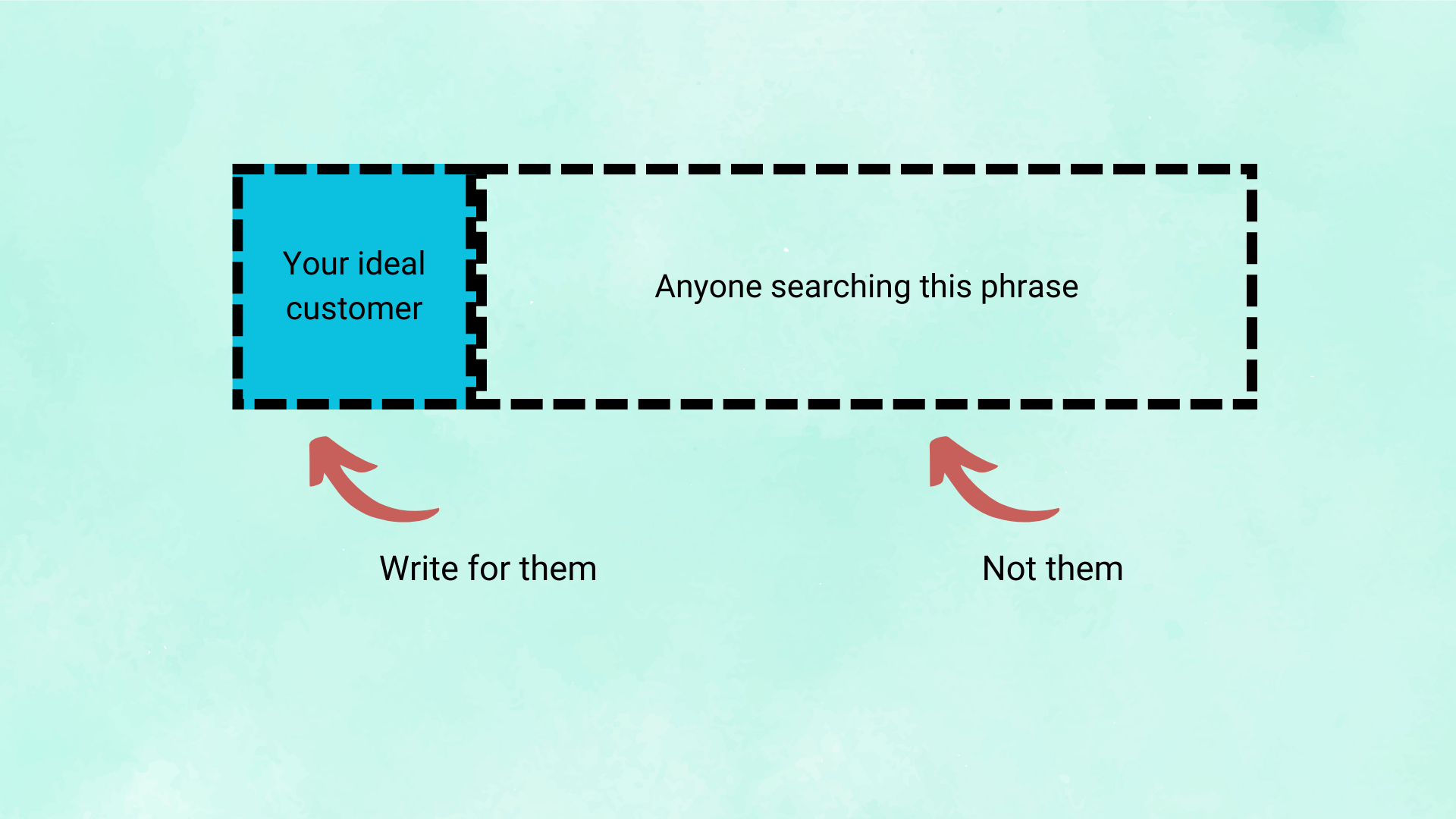If you’re doing research on lead generation for your fintech company, it’s likely you’re looking for inspiration on how other fintech startups have generated leads and examples of tactics that work.
As an agency, we’re able to see what few people can: how different fintech companies are doing lead generation and what is and isn’t working for them. We’re able to compare Google Analytics accounts, Hubspot dashboards and internal team functions, and see first-hand what’s working in the fintech industry.
Our Managing Director (Araminta) also co-manages the 1,400+ person fintech marketing Slack group and hosts fintech events regularly in Edinburgh and London. This gives us a good overview of what’s working in fintech.
At the time of writing (August 2023), we’re seeing more fintech companies focusing on profitability, leading to more marketers and fintechs focusing on lead generation (which is likely why you’re reading this). But new leads don’t come from just spending more money on PPC or ads. It’s likely your leadership team is asking you to generate more business without increasing spend.
That’s why in this article we’ll be covering:
- 4 examples of fintech lead generation campaigns
- A strategy that works: content focused on the bottom of the funnel
- How we help fintech companies generate leads with content
4 examples of fintech lead generation campaigns
1. Creating content on LinkedIn helped Tilled get inbound leads
Caleb is the founder and CEO of Tilled, a Payfac-as-a-Service financial services company. By posting regularly on LinkedIn, Caleb was able to reach a point where 75% of qualified leads came inbound, with an incredible 59% close rate.
We interviewed Caleb to learn more about his approach and what drives this success.
He attributes the majority of his success to content marketing and consistent LinkedIn posts. 12 months before Tilled officially launched, Caleb started publishing multiple times per week on LinkedIn and the Tilled website.
He hired a part-time ghostwriter who would interview him on a weekly basis, and create content based on those interviews. His fintech lead generation strategy was straightforward: share interesting content, answer questions from prospects and talk about trends in the market.
7 months before launching, Caleb started to see a huge amount of inbound dealflow. Best of all: it was consistent. Every month, people reached out to him via LinkedIn or his website to work with him.
Now, when a prospect jumps on a call, they are very well educated on what it is Tilled does. Best of all, this content has also helped reduce recruitment costs. Unusually for a B2B consultative company, Tilled’s marketing team is twice the size of the sales team.
Lead generation tactic: start building a brand on LinkedIn. It could be on behalf of your founder/CEO or yourself. Start posting regularly about topics linked to your company and your journey. Do it consistently and keep it authentic. Then, wait.
Read the full case study: How This Payments Company Gets 75% of Leads Inbound and a 59% Close Rate with Content Marketing
2. Sponsoring this event generated a huge amount of awareness and leads for Brex
In high ticket enterprise and B2B sales, relationships are key to lead generation. That requires going to events and networking. There are more events for payments and fintech every year (many of which we organise and speak at), and they’re a great opportunity to get in front of the right people.
The problem is most companies execute it incorrectly. They pay a sponsorship fee, turn up to the event and hope to get high-quality leads. Unfortunately, that rarely works.
In this Twitter thread, Sam Blond, ex CRO of startup Brex, goes into a lot of detail about how Brex made the most of a SaaStr while spending ⅓ the budget of other companies. The key message in this thread is not the absolute budget numbers (which we know may be too high for most fintechs), it’s how to approach the strategy.
Instead of paying a fee and hoping for the best, Brex went all out with their sponsorship. The strategy was: everywhere the conference attendee went, they would see Brex.
These are four things Sam did to stand out with Brex:
- Sponsor key cards. When an attendee checked in, the key card looked like a Brex credit card.
- Hired people dressed in Brex swag giving out “Brexfast” burritos just outside the conference centre.
- Hired a magician at the booth: there was always a big crowd at their booth.
- Bought bus shelter billboards within a mile of the event.
Lead generation tactic: if you’re going to spend money on a booth, get creative. Hire a musician. Host a party afterwards. Go dressed in bright pink. Be creative and your lead gen efforts will be more successful.
Read his Twitter thread: Sam’s Twitter
3. Sponsoring a niche podcast for developers brought in a 30% in conversions for Railz
In a webinar we did a few years back, Nabi, Demand Generation Manager at Railz, talks about how his company sponsored a niche podcast and got good results.
Railz is a financial technology and accounting data API company. At the time, they were looking for ways to target developers. Even though developers aren’t the main decision makers, they are instrumental to implementation and a key influencer in the buying process.
Railz decided to sponsor a technical podcast where the podcast host interviewed Railz’ CTO. They decided an interview on a very technical topic would be more effective than placing a 20 second ad (which doesn’t go down well with developers).
The result? According to Nabi, a 30% increase in conversions.
A few other tactics that worked for Railz include:
- Posting their product in product discovery directories like API listings and directories.
- Doing SEM ads that drove people directly to an API registration page rather than a landing page.
Lead generation tactic: if you’re targeting developers, take your Head of Data Science, CTO, Head of Engineering and get them to be interviewed on podcasts.
You can also watch the webinar with Railz here: Marketing to Fintech Developers: What Works and What Doesn't | Nabi, Demand Generation Manager Railz
4. Investing in SEO helped Wise target prospects who are more likely to convert
Based on our experience as a content marketing and SEO agency, we’ve seen a lot of fintech companies do SEO wrong. Often, companies use SEO to rank for keyphrases that are only slightly related to what the company does.
For example, an accounting software will often try to rank for “what is accounting” or “accrual vs cash”.
But if you’re looking to do lead generation, you should be aiming to rank for “top accounting software”, “accounting software for SMEs” or “competitor X vs competitor Y”. Too often, SEO is treated as a channel for education, when it can be incredibly powerful for lead generation efforts.
You can read more about the right way to do SEO here: Fintech SEO: How to Acquire Customers (Not Traffic) with Search
But there are some fintech companies that are doing a good job with SEO. One great example is Wise.
Although they are a large company, this lead generation strategy is easy to replicate cost-effectively with a small budget. Their strategy is simple: target people who are leaving or joining a competitor’s company.
Here are some examples of the pieces of content they’ve written:
- How to close your ING Australia Bank account
- How to close your UBank account
- How to open a bank account with Westpac
- St. George Bank international transfer: Fees, rates and transfer time
This is very clever because: someone looking up “how to close an ING bank account” is someone who might be looking to change bank account (and may be interested in Wise). They are a lot more likely to convert than someone looking up “what is a bank account”. Even if the reader may not be ready to convert, the fact they’re reading about how to close or open an account on Wise can only be beneficial for the company..
A lot of the work we do with our fintech clients is exactly that: helping them figure out who their ideal customer is, what their pain points are, targeting them by ranking on Google and then writing in-depth content that would lead someone with expertise to convert.
And if you work for a big-ticket B2B company and think this may not work for you, don’t worry, it works very well. For example, we’ve helped complex B2B payment orchestration company Zai bring in $500k+ worth of business only (and were able to prove it). They’re less focused on the competition, but they’re still targeting people who are ready to buy:
- Direct Debit API: How to set one up (and when to use one)
- Top Direct Debit Solutions in Australia (We Compare 4!)
- Adyen vs Stripe vs Zai: Which is best for Australian businesses?
Lead generation tactic: If you have a strong website and have already published quite a bit of content, creating content that targets people who are closer to converting could work well for B2B lead generation.
You can learn more how to put this into practice here: What is BOFU (Bottom of the Funnel) Content and Why Is it Important?
A strategy that works: content focused on the bottom of the funnel
If you’ve read this far and are still looking for a strategy that would help with fintech lead generation, then keep reading.
In this section, we’ll walk you through a specific strategy and tactic that is very effective for lead generation: content marketing for lead generation. Content marketing is very powerful in fintech, especially because the topics are usually complex and people rely on Google to find information. Also, a lot of the existing B2B fintech content is low quality or is written for the wrong audience. This is where the opportunity lies.
When marketers get started with content marketing, they often start by targeting people who are at the Top of the Funnel: prospects who don’t even know they have a problem. We argue that it makes more sense to target those at the bottom of the sales funnel and are ready to convert.

If you’ve got a strong website, and some good traffic already, then you might be able to get results very quickly with BOFU content (usually, however, we say that results take at least 5 - 6 months. Learn more about how long it takes here: When Can You Expect Results from Content Marketing?).
For example, with Jeeves, a business credit card for high growth startups, we wrote content targeting keyphrases like:
- Business credit cards for employees
- Virtual business credit card
- Ramp vs Brex
- Global expense management
For our B2B client, Zai, we wrote content targeting phrases like:
- Direct debit solutions
- Stripe vs Adyen
- Multi-party payments
You can read the case studies for each client if you’d like, but with each client we were able to bring in enough leads per month that we were able to pay for ourselves and more. Just by focusing on people who are at the bottom of the funnel, we got in leads.
But ranking on Google is just half the battle. You also need to write content that is compelling to your reader and will encourage them to reach out. This is another mistake fintech firms make with content: they write content that is for beginners. If you are targeting Heads of Payment and CTOs, don’t start an article with “what is a direct debit” or “what is a marketplace”. You need to write for their level of knowledge
That’s why when we create content, we make sure we’re writing for the ideal customer, not just anyone.

See how for our B2B payment orchestration content, the level of writing is for an advanced target audience, not beginners:
- 3DS2: Everything you need to know and how to prepare for it
- Intelligent payment routing: How it works and top use cases
Not only that, but you also need to know how to write in a way that leads someone to convert. In many cases, that means writing about the product in the right way (without being salesy). You can learn how to do that here: How to Write About Your Product In Your Content [And Increase Conversions]
How we help fintech companies generate leads with content
Our specialty is helping fintech companies use content for customer acquisition. We do that in a few ways:
Your content strategy is focused on acquiring leads and potential customers and based on customer research
As per what you’ve read above, you’ll see that we believe it makes more sense to start BOFU content and work your way up. So when we start working with a client, we’ll spend one month interviewing the right people on your team to understand who your ideal customer is and their pain points.
We’ll ask them questions like:
- What was the last prospect/company that you had a really easy time closing? What type of prospects are the ones that are the easiest to close?
- What are you usually compared to? What are the alternatives?
- What is the most common reason for buying your product?
- How do they currently solve X and how much does it cost to do so?
- Who are the customers that bring the most amount of revenue?
- Who are the customers that stay with you the longest?
It’s a very thorough process that allows us to understand how to target your ideal customer. You can learn more about it here: How to Do Research for Bottom of the Funnel Content Marketing
Once that initial phase of research is done, we’ll put together a strategy that starts by targeting people who are more likely to convert. That way we can get results sooner and bring in leads and customers.
Your content will target your ideal customers (not everyone)
Because we’ve spent that time doing the research on who your ideal customer is and their pain points, it’s a lot easier to then write for them. Since we also have a background in fintech, we know how to write for an advanced audience. We don’t write for beginners or for anyone who isn’t an ideal customer.
You can see examples in the articles we’ve linked to throughout the article, but here they are again:
- 3DS2: Everything you need to know and how to prepare for it
- Intelligent payment routing: How it works and top use cases
Your content will be expert-based and advanced
For an advanced audience, you need to write advanced content. If not, no one will take you seriously – especially in B2B.
In order to overcome that, most of our content is based on interviews with internal experts on your team. This allows you to create thought leadership content and to also include key information about your product.
Learn more about that process here: Why You Should Create Content Based on Interviews With Experts
You’ll be able to attribute leads and customers to content
Finally, we do something no other content agency does in fintech: we track leads and sales.
A lot of people in digital marketing will say you cannot attribute leads to content. But with Google Analytics and Hubspot, we can track how much content helps with generating leads via first and last click attribution.
With the right Hubspot reports, you can track deals and see which contacts were influenced by your content. This allows us to measure how many organic leads we’ve generated, as well as the quality and close rate. These metrics also help create a more data-driven content strategy.
We understand that the leadership team needs to see numbers, so we are focused on those as well. Even though it takes 5 - 6 months to see results, the results are cumulative and significant enough that they are worth it.
You can learn more about our whole methodology here: Mint Studios framework
Hopefully with this article you have more ideas on how to generate leads for your fintech business. Some of these tactics will have inspired new ideas for your marketing campaigns, and you might be interested in implementing content marketing for lead generation. This approach is how we’ve supported companies like Zai, Parpera, Jeeves and many more with their lead generation and marketing efforts.
If you’re interested in learning more about how we could help your company, reach out to us to have a chat.











